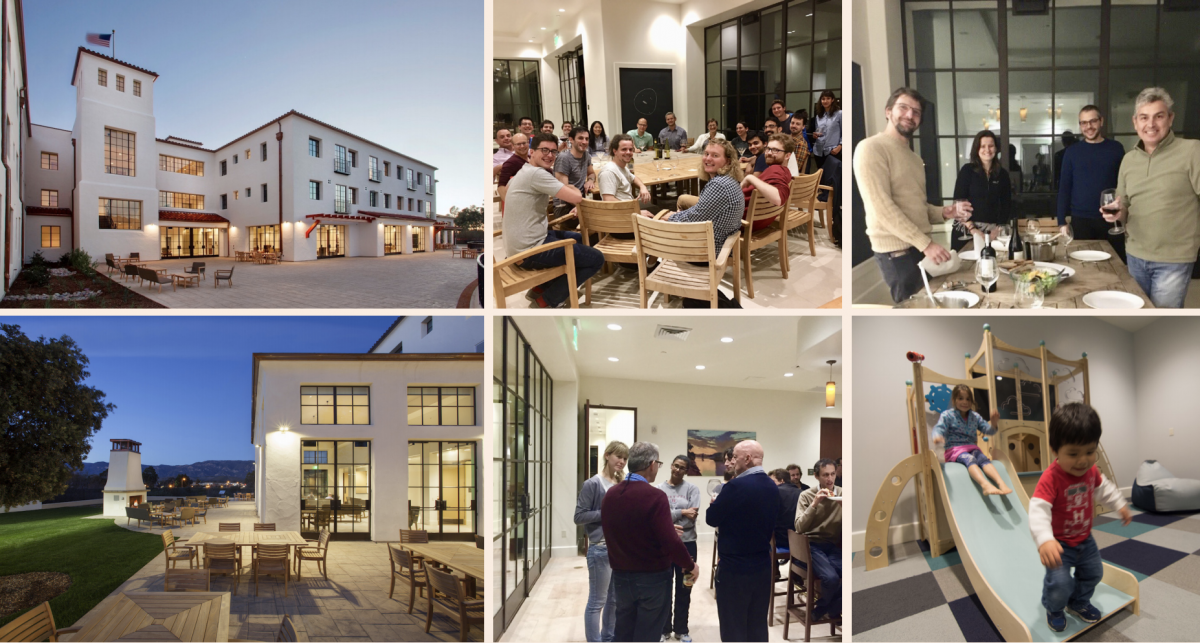The recent KITP Program "Resurgent Asymptotics in Physics and Mathematics" benefited greatly from the Charles T. Munger Physics Residence. Many participants had taken part in previous KITP Programs, staying in random housing locations scattered around town, and all were amazed by the many differences made by the simple fact that the participants now live under the same roof. The KITP Program experience has been totally transformed.
Even the seemingly mundane-sounding opportunity to discuss physics while walking together back and forth to KITP makes a huge difference. In addition, the various shared spaces at the Munger Residence, from BBQ to music, to snooker and ping- pong, provided many occasions for KITP scholars to get to know one another much better in an informal setting. This was particularly important in our Program, as we hosted a mix of physicists and mathematicians, from quite different fields, and who do not normally mix in conventional academic settings.
It is much easier to ask questions over a dinner or a snooker table than it is during a seminar! Another important highlight was the ease with which participants with young families could attend the KITP Program. This is particularly important for young female scientists, and in our Program it was also crucial for several male participants. Indeed, in our program alone there were six key participants who would not have been able to take part if it had not been for the excellent family-friendly facilities at the Munger Residence. This fact was extremely important for the success of the Program. On a lighter note, we hosted two music nights, one of which was a well-attended concert, with some of our musically talented participants, also from the concurrent “Physics of Quantum Information” Program, and UCSB. These, and other, musicians also enjoyed the opportunity to practice and perform on the excellent pianos and guitars. In conclusion, thanks to Mr. Munger for a terrific development which has the KITP leading the way in yet another direction.
- Gerald Dunne, Professor of Physics, University of Connecticut
KITP Newsletter, Spring 2018

